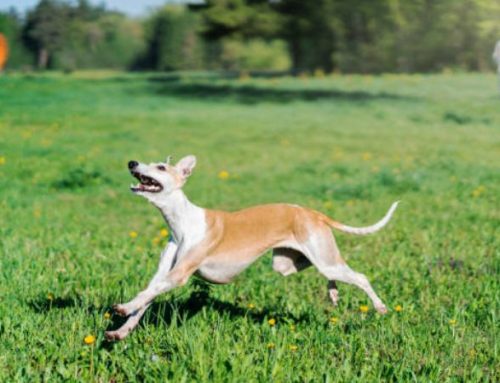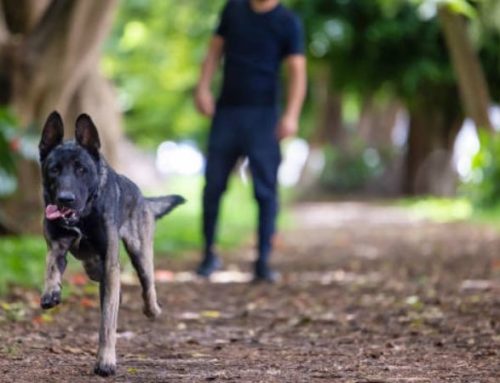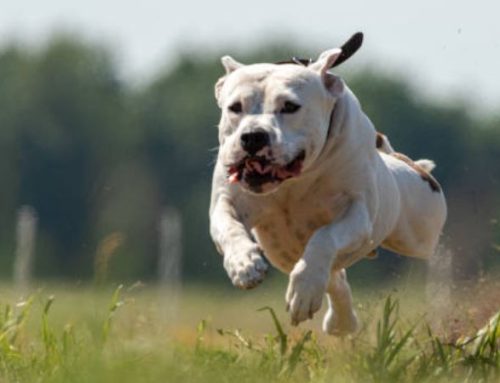Seeing your cat bring up green liquid can be alarming, especially when it’s accompanied by a loss of appetite. While an occasional bout of vomiting might be harmless—like clearing a hairball or something that disagreed with their stomach—repeated episodes could signal a deeper health issue.
Curious about why your cat is vomiting green liquid and refusing food? Let’s dive into the possible causes and what steps you can take to help your feline friend.
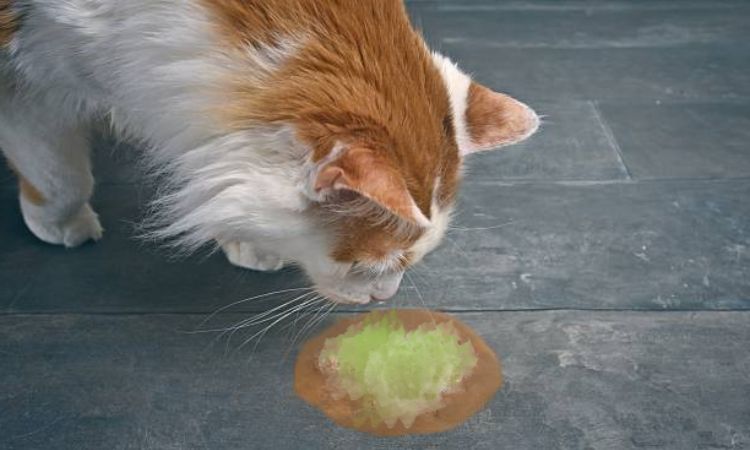
Common Causes of Green Vomiting in Cats
Green vomit in cats can be alarming, and it often signals an underlying digestive issue. While occasional vomiting may not be serious, repeated episodes require attention. Here are the most common reasons your cat might be vomiting green liquid:
1. Empty Stomach and Bile Irritation (Bilious Vomiting Syndrome)
When a cat’s stomach remains empty for too long, bile can accumulate and irritate the stomach lining. This often leads to vomiting green or yellow bile, especially in the morning before their first meal. Feeding smaller, more frequent meals can help prevent this condition.
2. Consumption of Plants or Grass
Cats sometimes eat grass or houseplants, which can trigger vomiting. Green vomit may contain plant matter and bile, indicating that the cat’s digestive system is reacting to something it can’t process. Be cautious with houseplants, as some can be toxic.
3. Inflammatory Bowel Disease (IBD)
Chronic inflammation of the intestines can cause frequent vomiting, including green bile. Cats with IBD may also show diarrhea, weight loss, and decreased appetite. This condition usually requires veterinary diagnosis and a tailored treatment plan.
4. Viral Infections Affecting the Digestive System
Certain viral infections can upset the stomach and intestines, leading to vomiting of bile or green liquid. Accompanying symptoms may include lethargy, diarrhea, and loss of appetite. Prompt veterinary care is important to prevent complications.
5. Kidney Disease and Metabolic Imbalances
Kidney dysfunction or metabolic disorders can cause toxin buildup in the bloodstream, resulting in nausea and vomiting. Cats may also show increased thirst, frequent urination, and weight loss. Early detection and management are crucial to maintain your cat’s quality of life.
6. Gastritis from Foreign Objects, Toxins, or Infections
Gastritis—an inflammation of the stomach lining—can result from ingestion of foreign objects, spoiled food, toxins, or infections. Vomiting green bile is a common symptom, and sometimes vomiting may be accompanied by blood. Veterinary evaluation is essential to identify the cause and prevent complications.
7. Organ Dysfunction Including Liver and Pancreas Problems
Liver or pancreatic issues can interfere with bile production or flow, leading to green vomiting. Other signs may include lethargy, jaundice, diarrhea, or abdominal discomfort. These conditions often require diagnostic testing and targeted treatment.
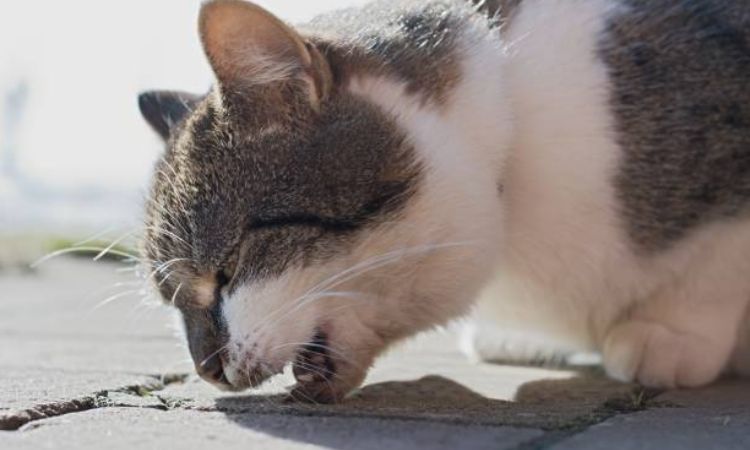
Why Is My Cat Not Eating?
Loss of appetite in cats is often closely linked with vomiting and can signal that your feline friend is experiencing discomfort or an underlying illness. Cats may stop eating due to nausea, abdominal pain, or general malaise, and this behavior should not be ignored.
Several health conditions can cause both vomiting and decreased appetite, including:
- Gastrointestinal issues: Gastritis, inflammatory bowel disease (IBD), or intestinal obstructions
- Organ dysfunction: Kidney disease, liver or gallbladder problems, or pancreatitis
- Metabolic and endocrine disorders: Diabetes or hyperthyroidism
- Exposure to toxins or ingestion of foreign objects
It’s crucial to monitor your cat’s overall behavior, including activity level, grooming habits, and social interactions, along with weight changes. Persistent appetite loss combined with vomiting, lethargy, or weight loss warrants a veterinary evaluation to identify and address the underlying cause promptly.
When to Seek Veterinary Care
Cats may occasionally vomit, but certain signs indicate a need for prompt veterinary attention:
- Persistent or frequent vomiting: Vomiting more than a couple of times per week may signal underlying illness such as bile irritation, gastritis, organ dysfunction, or inflammatory bowel disease.
- Vomit containing blood or black/tarry substances: Bright red or black vomit can indicate bleeding in the gastrointestinal tract and is a medical emergency.
- Significant weight loss or lethargy: Rapid weight loss, weakness, or noticeable fatigue may point to serious health issues like kidney or liver disease.
- Continued refusal to eat or drink: Cats that do not eat or drink for 24 hours or longer risk dehydration and malnutrition.
- Other concerning signs: Jaundice (yellowing of eyes or skin), abdominal pain, excessive drooling, or changes in behavior may indicate systemic illness or organ problems.
Note: Monitor your cat’s overall behavior, appetite, and weight. Early veterinary evaluation can prevent serious complications and ensure your cat receives the appropriate care.
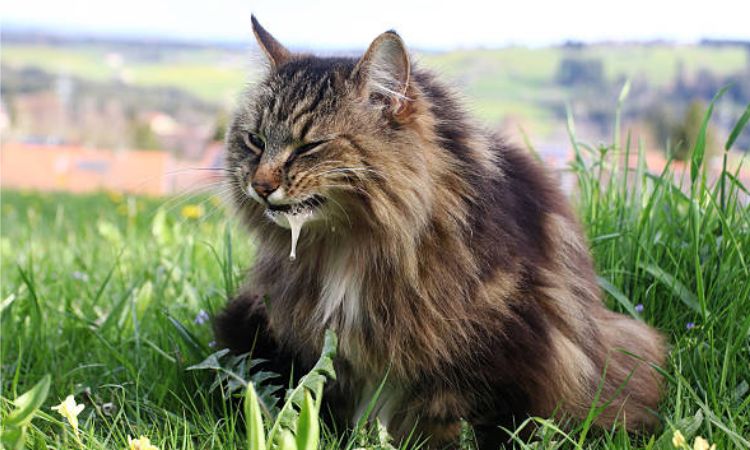
What You Can Do at Home
While some episodes of vomiting in cats may not require immediate veterinary attention, careful observation and supportive care at home can help manage the situation and provide valuable information for your vet:
- Monitor vomiting episodes: Keep a detailed journal of when your cat vomits, the appearance and color of the vomit, and any accompanying symptoms such as lethargy, diarrhea, or appetite changes. This record can help your veterinarian identify potential underlying causes.
- Adjust feeding schedules: Offering smaller, more frequent meals can prevent vomiting caused by an empty stomach or bile irritation, such as in bilious vomiting syndrome. Gradually transitioning to new foods and avoiding sudden dietary changes can also reduce gastrointestinal upset.
- Avoid giving human medications or harmful foods: Many human medications are toxic to cats, and certain foods can trigger vomiting or worsen existing digestive issues. Stick to cat-safe diets and medications only under veterinary guidance.
Keep plants and toxins out of reach Cats often chew on household plants or explore potentially harmful substances. Remove or secure toxic plants (like lilies, poinsettias, or dieffenbachia), chemicals, and other hazardous materials to prevent accidental ingestion.
When faced with the alarming sight of your cat vomiting green liquid and refusing to eat, a prompt consultation with a veterinarian is the most crucial step. While this information isn’t intended to replace professional medical advice, it’s vital to remember that green vomit can sometimes indicate a serious underlying condition. Your vet can provide an accurate diagnosis and appropriate treatment plan, ensuring your cat receives the best possible care during this distressing time.



